Systemic multicompartmental effects of the gut microbiome on mouse metabolic phenotypes
- PMID: 18854818
- PMCID: PMC2583082
- DOI: 10.1038/msb.2008.56
Systemic multicompartmental effects of the gut microbiome on mouse metabolic phenotypes
Abstract
To characterize the impact of gut microbiota on host metabolism, we investigated the multicompartmental metabolic profiles of a conventional mouse strain (C3H/HeJ) (n=5) and its germ-free (GF) equivalent (n=5). We confirm that the microbiome strongly impacts on the metabolism of bile acids through the enterohepatic cycle and gut metabolism (higher levels of phosphocholine and glycine in GF liver and marked higher levels of bile acids in three gut compartments). Furthermore we demonstrate that (1) well-defined metabolic differences exist in all examined compartments between the metabotypes of GF and conventional mice: bacterial co-metabolic products such as hippurate (urine) and 5-aminovalerate (colon epithelium) were found at reduced concentrations, whereas raffinose was only detected in GF colonic profiles. (2) The microbiome also influences kidney homeostasis with elevated levels of key cell volume regulators (betaine, choline, myo-inositol and so on) observed in GF kidneys. (3) Gut microbiota modulate metabotype expression at both local (gut) and global (biofluids, kidney, liver) system levels and hence influence the responses to a variety of dietary modulation and drug exposures relevant to personalized health-care investigations.
Figures
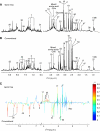
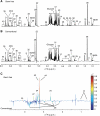
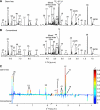
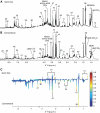
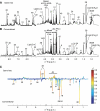


References
-
- Albrecht J, Jones EA (1999) Hepatic encephalopathy: molecular mechanisms underlying the clinical syndrome. J Neurol Sci 170: 138–146 - PubMed
-
- Alfieri R (2007) Hyperosmotic stress response: comparison with other cellular stresses. Pflugers Arch 454: 173–185 - PubMed
-
- Alvaro D, Cantafora A, Attili AF, Ginanni Corradini S, De Luca C, Minervini G, Di Biase A, Angelico M (1986) Relationships between bile salts hydrophilicity and phospholipid composition in bile of various animal species. Comp Biochem Physiol B 83: 551–554 - PubMed
-
- Amieva MR, El-Omar EM (2008) Host–bacterial interactions in Helicobacter pylori infection. Gastroenterology 134: 306–323 - PubMed
Publication types
MeSH terms
Substances
LinkOut - more resources
Full Text Sources
Other Literature Sources
Molecular Biology Databases

